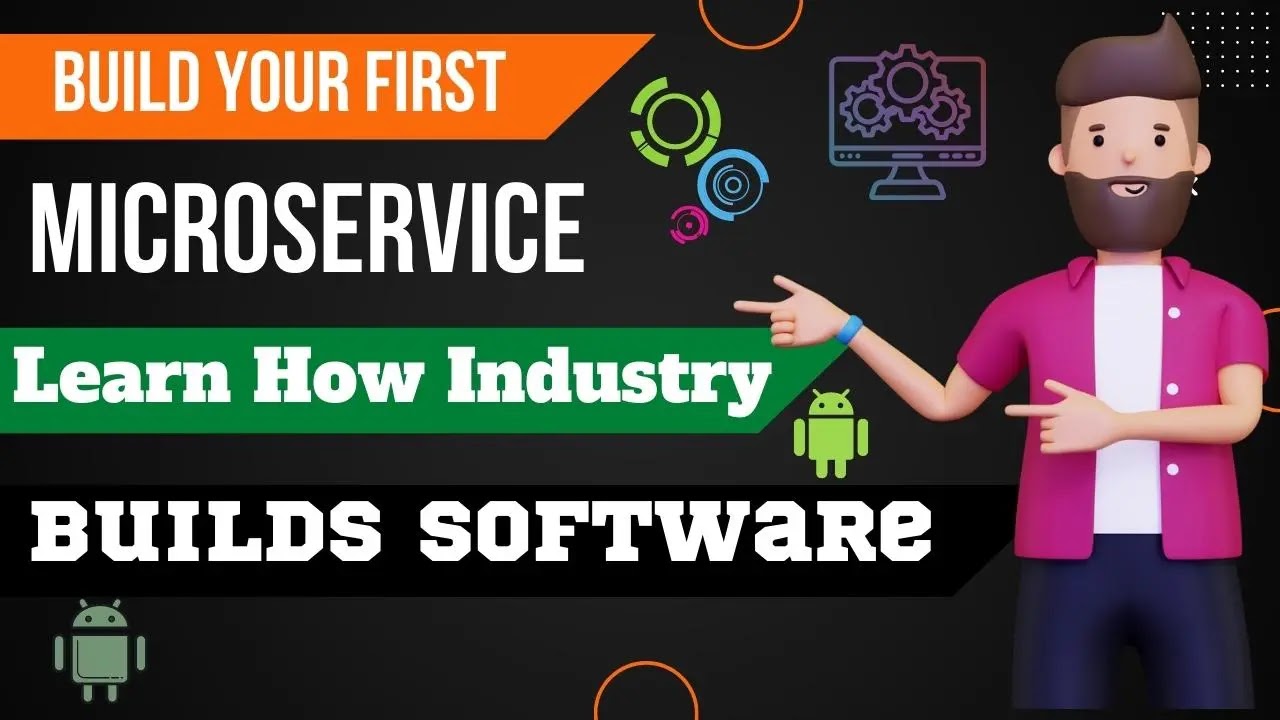Hello Everyone ,in this post I am going to talk about a Build Apps Like a Pro: Build Your First Microservice. Microservices are the new hotness in software development. They're so popular and so common now that it's easy to forget that they were a new idea just a few years ago. Most software is built as a monolith, or a single piece of software that does everything. But microservices break a software into smaller, independent pieces and allow them to scale independently. What you have is a system made up of numerous services that each do one thing. If anything goes wrong with one service, it's not going to bring down the entire system.
What is a microservice?
A microservice is a piece of software that is designed to be a thin, modular, and stateless service. It is designed to be a service that has the ability to respond quickly to changes in its environment and even be deployed in multiple environments. Microservices are the new way of building software. It is a new way of thinking that is changing the way software is being built. Microservices are quickly being adopted in the software development industry. In this tutorial, we will build a microservice and learn how industry builds software.
What are the benefits of a microservice?
There are a lot of benefits to building software in the microservice architecture. A microservice architecture is a software architecture that consists of small, independent services that communicate with each other. The benefits of a microservice architecture are that it is easy to build, test, and deploy. It is also scalable, easily extensible, and easy to maintain. A microservice architecture is a great way to build software.
How do you build a microservice?
Building a microservice is not as easy as it sounds. It requires a lot of planning and preparation. You will have to have a good idea of what you want the service to do and what your end goal is. You will also have to have a clear idea of how the service will connect to other services. If you are not sure how to do this, you can always outsource this part to someone else.
Choosing the right tools
The software industry is constantly evolving. New tools come out that make it easier to build software. But what are the best tools to use? It is important to know what tools are the most common and how to use them. Luckily, there are many great tools to use during the development process. It is important to choose the right tools for the job.
Building a microservice
To build your first microservice, you need to decide what you want your service to do. You can take this step as early as possible, but it is best to do this before you start getting your hands dirty with code. Once you have decided on what your service will do, you need to decide on the type of language you will use. The language you choose will depend on the type of service you are building. For instance, if you are building an API, you will want to use a language such as Python, Node.js, or Java. If you are building an application, you will want to use a language such as Java or Node.js. You will also need to decide on the framework you will use for your service. You should use a framework that is well-suited to the type of service you are building. For instance, if you are building an API, you should use a framework such as Django or Express. If you are building an application, you should use a framework such as Angular.js or React.js.
Deploying a microservice
To deploy a microservice, you need to do the following: 1. Install the framework 2. Create a Dockerfile 3. Create a Docker Compose file 4. Add your microservice to the compose file 5. Create a Docker Image 6. Push the Docker Image to a registry
Why use microservices
Building software is hard. You have to be able to work with databases, APIs, and other services that can make your life difficult. One way to make your life easier is by using microservices. Microservices is a software architecture that uses small, independent services that communicate with each other. They are like mini-programs that are used to build software. Often, these services are used to build software that has a large number of users. The best part about building software with microservices is that you don’t have to worry about the system breaking because of a single error. You can also build new software without having to worry about it being incompatible with the old software.
Learn how to build software/apps like they do in the tech industry.
In this webinar we will dive into what a Monolith is (the old way of building software) and what microservices are (the new way of building software/apps).
This will teach you all the advantages of it, and that it actually makes it easier to build software/apps this way.
Agenda
- Monolith vs Microservices.
- REST-API a building block of Microservices
- Fast-API
- PyCharm
- Install requirement.txt
- I am Alive
- Swagger
- Create your first microservice
Level: Beginners and Intermediate Python programmers
Target: Everyone that wants to learn how to build software/apps like the tech industry does.
What are the benefits of microservices?
Microservices are a new way of building software. They are made up of small, independent services that work together to accomplish a specific task. Microservices help to keep your code modular and scalable. They also encourage high-quality, automated testing. Furthermore, they are an ideal way to make your software more agile. They are also easier to test and debug. Microservices are a great way to build apps like a pro.
What are the drawbacks of microservices?
The idea of microservices is to break down the monolithic application into small, independent services that can be independently deployed and scaled. The benefits of this are that each service is easier to maintain and update, and it is easier to reason about the program as a whole. The drawbacks of microservices are that they require a significant amount of new code to be written, and they often require a significant change in architecture, which can be difficult.
Conclusion.
This article provides a step-by-step guide to building your first microservice, which is a collection of related software components that work together to achieve a specific goal. It also provides a list of resources that can help you get started. This article will help you get started building your first microservice. It will teach you how to build the software components that will eventually make up your microservice. These software components are grouped into different parts of the software development lifecycle. The article will guide you through each step of the lifecycle, so you can build your microservice. When you are building a microservice, you will need to consider how the microservice will be deployed. This article will also teach you how to deploy your microservice. This article will also help you learn how to build software. It will teach you how to build software components, how to do software testing, and how to make sure your software components work together to achieve the goal of your microservice.
Thank you all for reading this article






